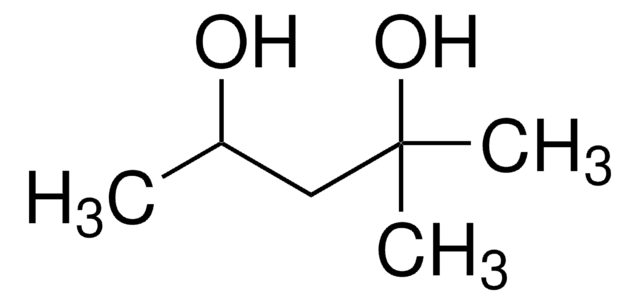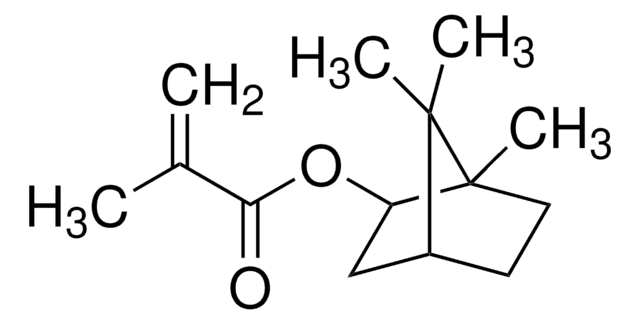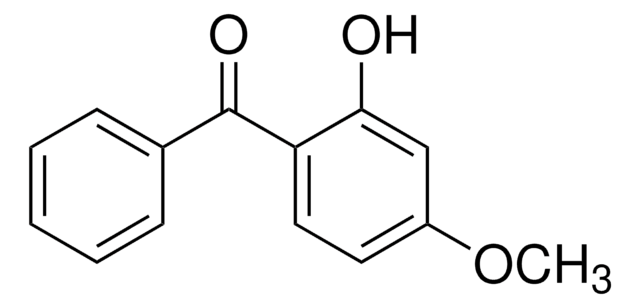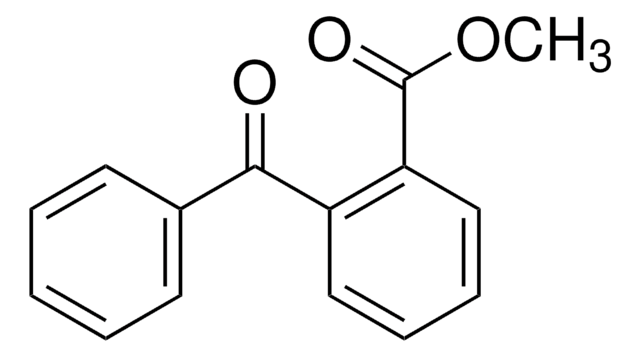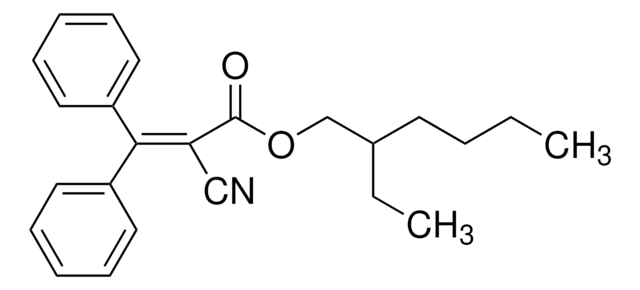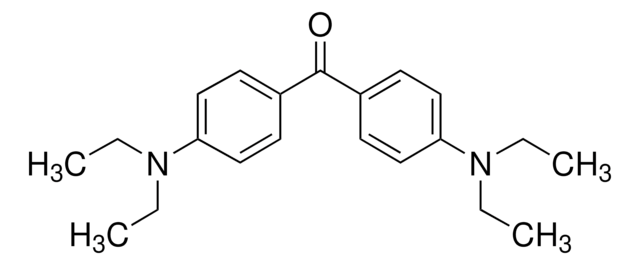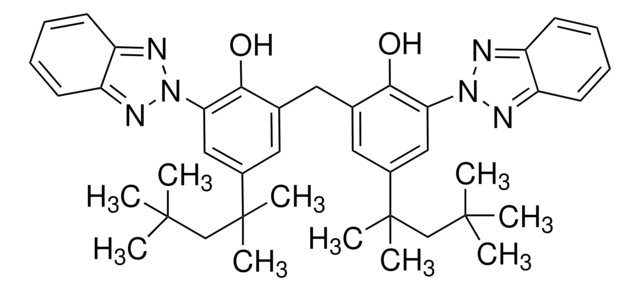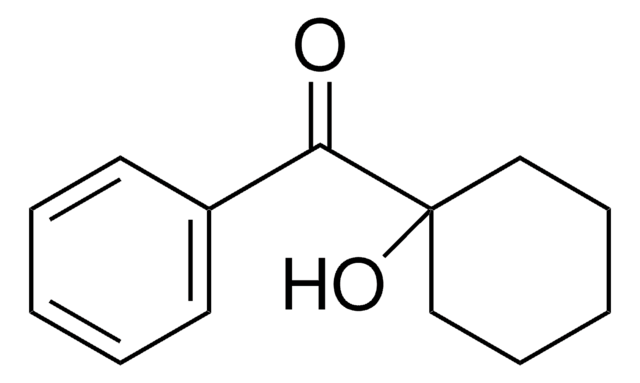437395
2-Ethylhexyl 4-(dimethylamino)benzoate
98%
Sinónimos:
2-Ethylhexyl 4-(N ,N -dimethylamino)benzoate, 2-Ethylhexyl 4-(dimethylamino)benzoate, 2-Ethylhexyl N ,N -dimethyl-p -aminobenzoate, 2-Ethylhexyl p -(dimethylamino)benzoate, 4-(Dimethylamino)benzoic acid 2-ethylhexyl ester, EHDAB, Octyl dimethyl PABA
About This Item
Productos recomendados
Ensayo
98%
Formulario
liquid
índice de refracción
n20/D 1.542 (lit.)
bp
325 °C (lit.)
densidad
0.995 g/mL at 25 °C (lit.)
cadena SMILES
CCCCC(CC)COC(=O)c1ccc(cc1)N(C)C
InChI
1S/C17H27NO2/c1-5-7-8-14(6-2)13-20-17(19)15-9-11-16(12-10-15)18(3)4/h9-12,14H,5-8,13H2,1-4H3
Clave InChI
WYWZRNAHINYAEF-UHFFFAOYSA-N
¿Está buscando productos similares? Visita Guía de comparación de productos
Categorías relacionadas
Descripción general
Aplicación
- Study of the photochemical transformation of 2-ethylhexyl 4-(dimethylamino) benzoate (OD-PABA) under conditions relevant to surface waters: This research investigates the photochemical behavior and transformation products of 2-ethylhexyl 4-(dimethylamino)benzoate in aquatic environments, highlighting its environmental impact (Calza et al., 2016).
- Photoprotection or photodamage: a direct observation of nonradiative dynamics from 2-ethylhexyl 4-dimethylaminobenzoate sunscreen agent: The paper provides insights into the nonradiative dynamics of 2-ethylhexyl 4-dimethylaminobenzoate, assessing its effectiveness as a sunscreen agent and potential for photodamage (Ma et al., 2018).
- Bioaccumulation and biomagnification of 2-ethylhexyl-4-dimethylaminobenzoate in aquatic animals: This study examines the bioaccumulation and biomagnification potential of 2-ethylhexyl-4-dimethylaminobenzoate in aquatic organisms, providing valuable data on its environmental persistence and effects (Lu et al., 2018).
Palabra de señalización
Danger
Frases de peligro
Consejos de prudencia
Clasificaciones de peligro
Repr. 1B
Código de clase de almacenamiento
6.1C - Combustible, acute toxic Cat.3 / toxic compounds or compounds which causing chronic effects
Clase de riesgo para el agua (WGK)
WGK 2
Punto de inflamabilidad (°F)
374.0 °F - closed cup
Punto de inflamabilidad (°C)
190 °C - closed cup
Equipo de protección personal
Eyeshields, Gloves, type ABEK (EN14387) respirator filter
Elija entre una de las versiones más recientes:
¿Ya tiene este producto?
Encuentre la documentación para los productos que ha comprado recientemente en la Biblioteca de documentos.
Los clientes también vieron
Nuestro equipo de científicos tiene experiencia en todas las áreas de investigación: Ciencias de la vida, Ciencia de los materiales, Síntesis química, Cromatografía, Analítica y muchas otras.
Póngase en contacto con el Servicio técnico

